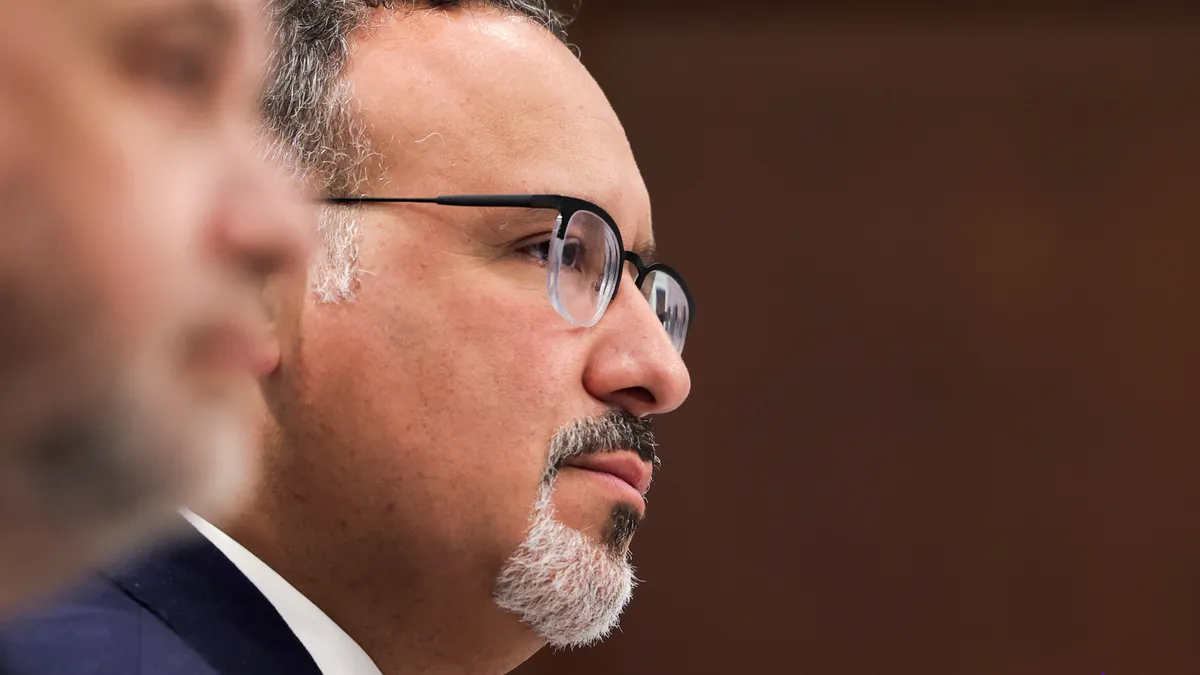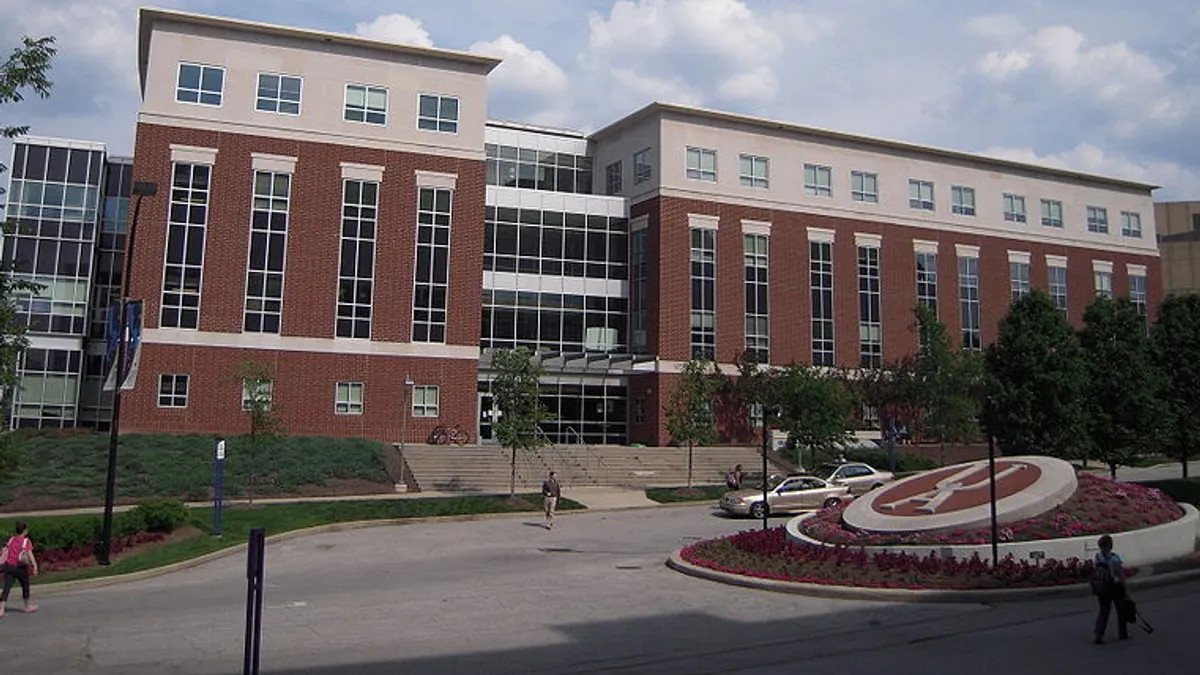As the climate movement has grown, more attention has been paid to colleges’ significant contributions to greenhouse gas emissions.
Many have tried to counter contributions with sustainability initiatives, with varying results. Vanderbilt University, a private research university in Nashville, Tennessee, in November announced a big cut, saying that it reduced greenhouse gas emissions by 19% since the fiscal year that began in July 2019.
Emissions per square foot have dropped 23%, despite a growth in building space. The university also achieved carbon neutrality in 2020, in part by purchasing carbon offsets, which colleges and other organizations use to cancel out their own emissions by putting money into outside projects intended to reduce emissions.
While Vanderbilt has an endowment of more than $10 billion and resources to dedicate to such a greenhouse gas reduction, experts say huge spending isn't necessary for every college that wants to make an impact. Indeed, colleges and universities that top an annual sustainability index from the Association for the Advancement of Sustainability in Higher Education are in many cases public institutions — like North Seattle College, New Hampshire's Keene State College, Michigan's Grand Valley State University, and Arizona State University.
We looked at the specific ways Vanderbilt said it managed its emissions reduction and asked experts if they might be options for other colleges.
Energy sources
When talking about greenhouse gas emissions, energy use is typically top of mind. At Vanderbilt, natural gas and purchased electricity were responsible for about 80% of greenhouse gas emissions in the fiscal year ending in June 2022.
The campus has an on-site natural gas power plant that meets the university's steam needs, as well as 29% of its electricity needs. But the other 71% of its electricity needs are met by purchased electricity.
In 2019, Vanderbilt made an agreement with the Tennessee Valley Authority to purchase renewable energy through two solar farms. The farms are yet to be built, but the university anticipates the agreement will mitigate 70% of emissions from electricity generation by the end of this year, and 100% by 2024.
Julian Dautremont, cofounder and director of programs at the Association for the Advancement of Sustainability in Higher Education, doesn’t specifically make recommendations to colleges. But, he said, acquiring renewable energy through power purchase agreements can sometimes be cheaper than buying electricity regularly through a utility company. Purchasing contracts also typically offer a predictable rate.
“Switching to renewables can often be a very good investment,” he said. “Not always. It’s dependent on context and what’s available to you.”
Technically speaking, the electrons that are delivered may not be the ones that were generated via renewable energy, Dautremont said. But colleges will still be supporting renewable energy and can consider their emissions decreased.
Energy efficiency
Altering campus facilities to require less energy is another move that colleges and universities might consider, according to Andrea George, Vanderbilt’s assistant vice chancellor for environmental health, safety and sustainability. That includes projects to upgrade lighting and insulation and replace windows.
“We would recommend to other universities to invest in energy efficiency, as the return on investment is often quick, and significant carbon savings can be achieved,” George said via email. “Every dollar not being spent on an electricity bill is a dollar that can be used for a university’s core mission or be reinvested in additional energy saving measures.”
Dautremont similarly said energy-efficient equipment and facilities can meet the dual goals of reducing emissions and saving a campus money.
“On any given campus, unless they have a really small program, most still have opportunities for energy savings — new LED lightbulbs and other more efficient equipment, removing outdated equipment and consolidating,” Dautremont said. “Instead of everybody having a printer in their office, there are centralized printers everybody can use. That saves energy.”
Commuting and travel
Vanderbilt's two-year emissions reduction of 19% follows a larger recent drop. The university's emissions fell 32% from fiscal 2018 to 2020 — a time period that started before the pandemic but ended at the height of coronavirus-related restrictions.
Anecdotally, some colleges saw emissions reductions during the pandemic as commuting and air travel decreased, Dautremont said. Electricity use dropped some, too.
Colleges didn’t see major reductions in heating and cooling emissions, he said, because many buildings still had enough people using them that they needed to be climate-controlled.
Vanderbilt owes some of its emissions reduction to changes in commuting patterns. Though 12,000 people regularly commuted to campus two years ago, that number is now 3,400. Before the pandemic, the university started an initiative to lower the rate of commuters who drive alone from 76.5% to 55% by 2025 by incentivizing biking and public transit.
That program was jump-started once people needed to work from home. Vanderbilt has continued to allow work from home in certain situations, which has positively affected emissions, George said via email.
But programs to encourage public transit can also make a significant difference, as well as benefit both the university and its community.
For the institution, subsidizing sustainable commuting options like the bus helps save money on supporting parking lots and garages, freeing up expensive land that can be used for “core-mission purposes,” George said. In turn, community members can save money on their commutes and potentially adopt healthier behaviors like walking and biking.
It’s possible that some emissions may simply shift to employees’ homes when they are working remotely, Dautremont said. But the effect of encouraging hybrid work is still very likely a net decrease in emissions.
“If people are staying home instead of commuting, they are adding to the electricity load of their home, presumably,” he said. “It’s probably not a huge impact for most employees, but for some it might be.”
Emissions offsets
Vanderbilt has made ample use of carbon offsets to achieve net neutrality. The university has a partnership with Climate Vault, an offsetting program where clients can pay to have emissions permits taken off markets operated under the California Air Resources Board's Cap-and-Trade Program and Northeastern states' Regional Greenhouse Gas Initiative. The university originally planned to reach carbon neutrality by 2050. Because of the offsetting program, it did so in 2020.
Some environmental advocates have criticized carbon offsets. It can often be hard to prove that the programs are reducing carbon emissions. With some offsetting programs, such as those that supposedly reduce emissions by adding legal protections to forests, it can be difficult to know what would have happened in the absence of the program and whether emissions were really prevented.
Dautremont said not all offsetting programs are created equally, but there are some good vendors. Some certification programs can help colleges decide on a vendor. It’s currently nearly impossible, he said, to achieve neutrality without some kind of offsetting program.
“If you’re going to try to take responsibility for your emissions, offsets have got to be part of that conversation, at least in the short to medium term,” he said. “There’s no way you’re getting to zero without some use of offsets.”
Correction: A previous version of this story misstated the types of permits involved in Climate Vault's program. We have updated that and also added information about the emissions permits markets in which Climate Vault participates.























